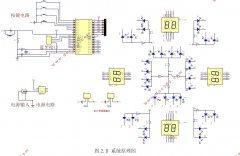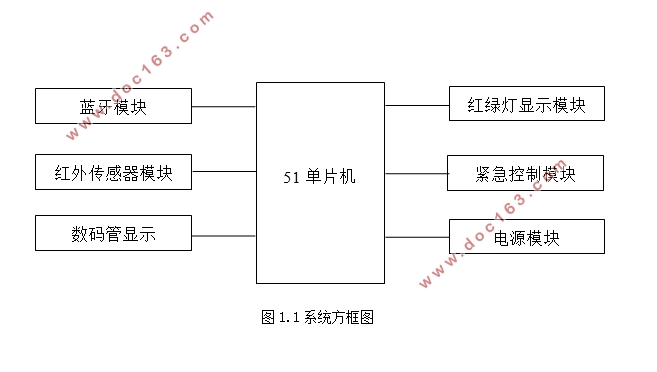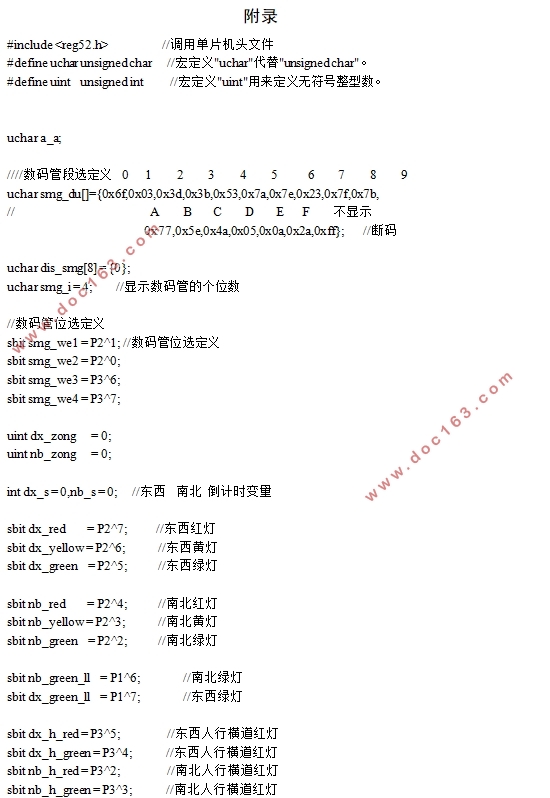基于单片机的交通灯设计

1.无需注册登录,支付后按照提示操作即可获取该资料.
2.资料以网页介绍的为准,下载后不会有水印.资料仅供学习参考之用.
密 惠 保
基于单片机的交通灯设计(论文11300字)
摘要:本论文设计了一种基于C51单片机的新型智能交通灯控制系统,在完成基本的交通灯功能外,还采用红外传感器对路况车流量实时检测,不仅能以固定计时模式工作,还可以根据路口车流量的多少自动调整交通灯的计时。该系统采用LED共阴极数码管显示路口倒计时时间,并且能以按键形式实现紧急模式和夜间模式的切换。该系统的硬件电路包括单片机最小系统、交通信号灯模块、显示电路模块和基于蓝牙的交通图片传输模块。软件部分则采用 C语言编程。本系统设计周期短、可靠性高、实用性强、操作简单、维护方便、扩展功能强。
关键词:C51单片机;紧急模式;红外传感器;蓝牙传输
Traffic light design based on single chip microcomputer
Abstract: In this thesis, a new intelligent traffic light control system based on C51 MCU is proposed. In addition to implementing the basic function of traffic light, traffic flow is also detected in real-time by using infrared sensors. The system can work in the mode of fixed timing, and can automatically adjust the timing of traffic light according to the amount of traffic flow. The system uses cathode digital LED to display the countdown time at the intersection, and can realize the switching of emergency mode and night mode by buttons. The hardware circuit of the system includes a smallest single-chip system, a traffic signal module, a display module and a Bluetooth based traffic picture transmission module. The software is programmed using the C language. The system has good performances, such as a short design cycle, high reliability, strong practicability, simple operation, easy maintenance, and strong extension. [资料来源:THINK58.com]
Keywords: C51 microcontroller; emergency mode; infrared sensors; Bluetooth transmission



目 录 2
第一章 绪论 3
1.1 交通灯控制系统的发展 3
1.2 课题研究的背景 3
1.3 课题研究的主要内容 3
1.4 课题研究方案 4
1.5 课题研究的意义 5
第二章 硬件设计 6
2.1 单片机系统设计 6
2.2其他模块电路 7
2.3 系统整体设计 10
2.4蓝牙模块设计 11
第三章 程序设计 12
3.1 系统软件总设计 12
3.2系统初始化 12
3.3数码管显示程序 12
3.4定时中断程序 14
3.5通行规则切换程序 15
3.6夜间模式设置子程序 17
3.7特殊情况设定子程序 17
3.8车流量检查程序 18
3.9蓝牙模块程序设计 20
第四章 系统仿真与调试 21
4.1 系统仿真 21
4.2 系统调试 25
第五章 总结与展望 27
参考文献 28
致谢 29
附录 30 [来源:http://www.think58.com]
